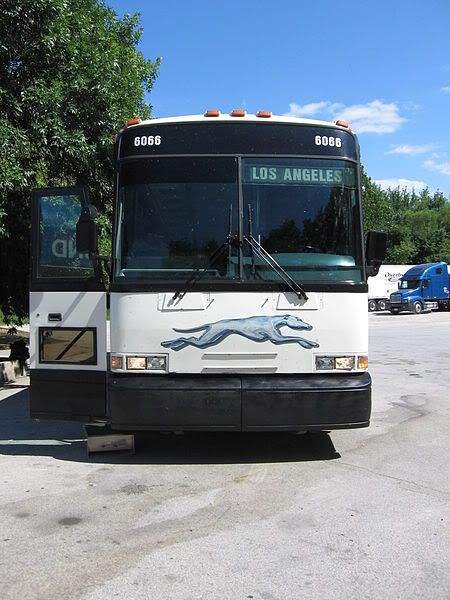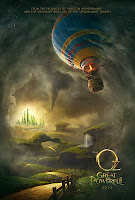L. Frank Baum learned a lesson the hard way: his books sold better if he published one Baum book a year. Too many would flood the marketplace and he'd be competing with himself. 1900 and 1901 showed sales far too low for his books. (Aside from
The Wonderful Wizard of Oz.)
Finally, Reilly & Britton came along with
The Marvelous Land of Oz and soon made a deal with Baum to publish many of his books, except the public wouldn't realize they were Baum books, because he'd write under pseudonyms. Also, he could do a varied output. So, while only
John Dough and the Cherub appeared in 1906 under Baum's name, he actually had many books out, including the first two
Aunt Jane's Nieces books by "Edith Van Dyne," the "Twinkle Tales" series by "Laura Bancroft,"
Annabel by "Suzanne Metcalf,"
Daughters of Destiny by "Schuyler Stanton," and
Sam Steele's Adventures on Land and Sea by "Capt. Hugh Fitzgerald."
It is the last book mentioned that is at hand, and before we start looking at it, let's look at the history.
Sam Steele's Adventures was followed by a sequel in 1907, but the series just wasn't selling well. In a strange twist, the series was reissued in 1908 now attributed to "Floyd Akers" and retitled
The Boy Fortune Hunters, which was more attractively titled, and sold better and the series went on, finishing with six books.
The first book was retitled
The Boy Fortune Hunters in Alaska, which isn't an accurate title. The only boy hero in the story is Sam Steele, and he doesn't go to Alaska. (Close to it, but not TO it.)
The series has been reprinted in the past 20 years by Hungry Tiger Press. The first book was published in
Oz-Story #1 as the concluding L. Frank Baum novel. This is how it is currently represented in my collection. David Maxine once mentioned he planned to publish the book again in a standalone form, but we need to remember HTP is a small press. (So go buy some books!) I'll reveal how they published the series in later blogs.
The story opens with Sam Steele, a young teenage boy who's been left at home with an old woman named Mrs. Ranck to care for him while his father is at sea, shipping freight. When our story opens, Sam is informed that his father's ship wrecked and his father is dead. Mrs. Ranck tells Sam he has to leave, because she now owns the house and his father didn't pay her, estimating her loss at $400. (Remember, 1906.)
Sam says that his father told him the house was his, and that he had treasures in his room. But when they inspect the room the next day, the room is empty. Sam is made to leave, but he vows to pay Mrs. Ranck the money she's owed.
Sam meets Naboth Perkins, his uncle, who was visiting to extend condolences, and after facing Mrs. Ranck himself, he offers Sam to take a taste of his father's business by going on a freighting trip himself. Since Sam has nowhere to go, he takes him up on this.
We are introduced to the crew of the
Flipper, including Naboth Perkins, Ned Britton (the sole survivor of Sam's father's ship's destruction), and the two Sulu islanders who were rescued after being found at sea, Nux and Bryonia.
I'm rather of the opinion that Nux and Bry is a rare example of Baum successfully depicting national diversity. Yes, he does include some less-than-flattering dialect for them, and at times, they are asked to do quite a bit of work or sacrifice something temporarily, but Baum never depicts them negatively.
On a voyage, the
Flipper is lost in a storm, and they come across an uncharted island, where they are captured by stranded men who have been living there, washing gold dust and building up a fortune. Their leader proves to be amiable and suggests the
Flipper's crew work with them and sell them goods from the freight and go home after a few months, or else they can be killed. The crew decides to work with the men.
Sam runs the makeshift "store," and notes some unsavory characters, and sure enough, one night, Sam is awoken at gun point as four of these men steal his gold and many provisions. Sam, Nux, and Bry follow them stealthily, though Bry is caught and plays along that he wants to go with them and will work for them without wanting any gold.
Sam and Nux observe the scoundrels as they decide to make a raft, take the
Flipper, and head back to America. As a hideout, they have a cave that serves as a safe hideaway due to its very secure location. While they are away, Sam and Nux manage to empty the bags of stolen gold into Nux's trousers (he has to go without for a bit as Sam ties up the ends into a bag) and replace it with sand.
Finally, there is a storm, and during it, Bry rejoins Sam and Nux, and a balancing rock is struck by lightning, sealing off the cave, creating a tomb for the scoundrels. The three go back to the rest of the group, and restore the gold to its proper owners. They stay on the island for awhile longer, obtaining more gold, and eventually decide to return to America.
Sam decides to pay off Mrs. Ranck, but a big surprise is in store for him: his father is alive! And furthermore, as Uncle Naboth suspected, she was lying! Captain Steele's treasures are hidden in a cellar. Mrs. Ranck is given a fairly generous sum and sent packing, and soon a new freighting firm is formed: "Steele, Perkins & Steele."
And there we go, Baum told an exciting story, and set up a wide scope for sequels: with a crew on a ship at sea, the possibilities were virtually endless.
Sam narrates the story from his perspective, and it's written well. I've read it at least twice before, but this time, I began to notice something about Sam. He considers crying "unmanly" and when he uses Nux's trousers for a bag, he mentions he laughs at how funny the Sulu looks. In which case, our hero might not exactly be the best person in the world. Or is he? Hmm... We'll see how he develops.
The story reminded me a lot of Robert Louis Stevenson's
Treasure Island, and others have noted a nod to H. Rider Haggard's
She in the balancing rock plot element. In David Maxine's foreword in
Oz-Story, he notes "no slight to Baum's imaginative powers;
She influenced everybody!" I also recalled a similar element in
Riders of the Purple Sage by Zane Grey, as well as "The Seven Cities of Cibola" by Carl Barks (an
Uncle Scrooge comic book adventure), which later supposedly influenced a scene in an
Indiana Jones movie. Art influences art influences art!
One thing I
love about the
Oz-Story version is that Maxine (quite likely assisted by Eric Shanower) managed to use art by John R. Neill to illustrate the story, even though Neill had never been commissioned to work on the series. The art comes from Neill's magazine work, and works surprisingly well, and since this was also my first exposure to the series, I picture Sam and Uncle Naboth looking exactly as they do in the improvised illustrations.
Anyway, the adventures of Sam Steele had begun, and Baum was only too glad to present more.




















